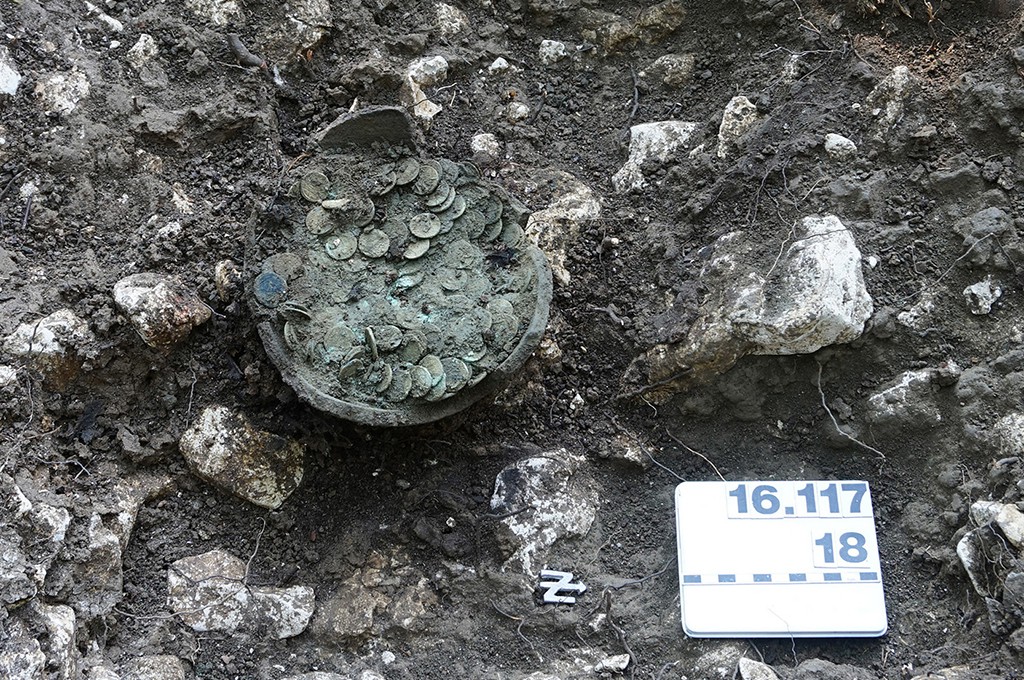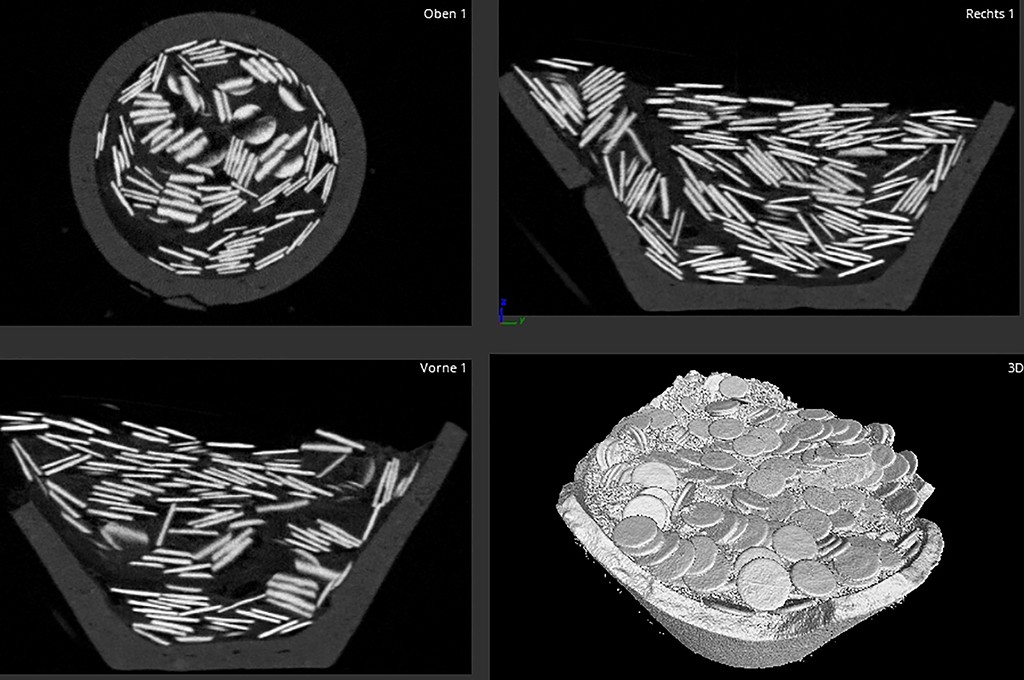Luxusní nález. 



Cooperating detectorist finds rare hoard of Roman coins from Constantine's reign
Categories: Minting - Numismatics , Nálezy nejenom s detektorem v západní Evropě

A hoard of more than 1,000 coins from the first half of the 4th century was found in Bubendorf in northern Switzerland. The discovery was made by a detectorist - a volunteer employee of the local museum, Mr. Daniel Lüdin. The coins were lying in a ceramic pot at a shallow depth. The experts picked them up in situ so that they could examine them in laboratory conditions and obtain as much information as possible. Treasures from the 4th century are very rare.
On 6 September last year, Mr Lüdin was walking in a wooded area near Wildenstein Castle when he noticed a strong signal. After uncovering a loose layer of soil, he found some Roman coins and a few shards. But the strength of the signal suggested something much greater. So he dug some more, and a little deeper he came across a partially broken pot filled to the brim with coins.
He immediately covered the hole and informed the officials of the canton of Baselland, who immediately sent a team to the site. The archaeologists removed the pot in situ - in a soil block - so that it could be examined under laboratory conditions. It is not only the coins themselves that are important, but also the fragments of the vessel and any traces of organic remains. The in situ location allowed the researchers to scan the entire block using CT scans. Among other things, the experts discovered that a piece of cowhide had been inserted between two layers of coins. The meaning of this is anyone's guess. Was it a treasure of two owners? I don't think we'll find out today...
The total number of coins after the treasure was completely dismantled was 1,290 pieces. All of them were copper with a low silver content. So they were small denominations. However, their sum was the equivalent of a gold solid of about 4.5 grams, about two months' pay for a legionary soldier. All coins were minted during the reign of Constantine I the Great (306-337 AD). The most recent ones date from 332-335 AD.
The hoard is unusual especially for the period of its deposition. It was buried at a time of political and economic stability. Coin depots were usually hidden during periods of unrest, but Constantine's reign was one of stability. Treasures from this period are very rare throughout the Roman Empire. Experts therefore believe it was deposited for other reasons. One possibility is a religious or other sacrifice; the site of the find lies on the former border of the three then known Roman dominions.
3D model.
Roman Nemec
Sources: archaeologie.bl.ch, thehistoryblog.com

CT scan of the coin cartridge - the black strip separating the coins is a piece of cowhide

Detail of the coins from the 3D model

Vessel - 3D model
The article is included in categories:






